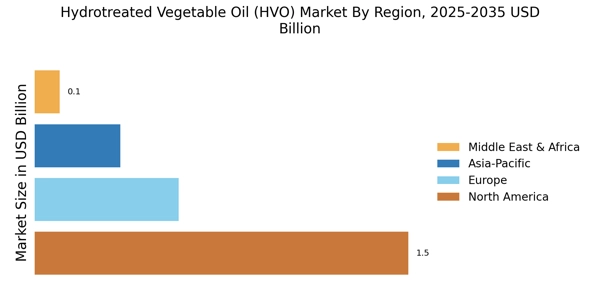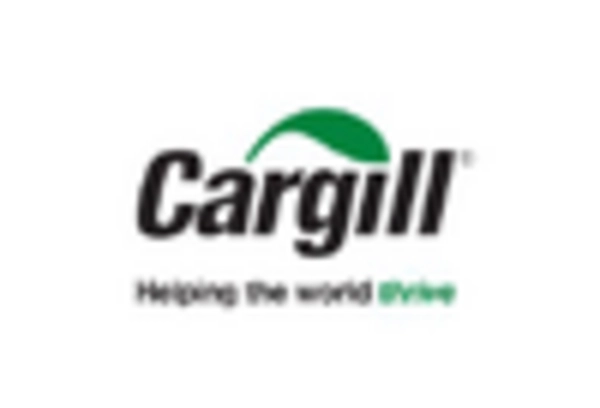Regulatory Support for Renewable Energy
The Hydrotreated Vegetable Oil (HVO) Market is experiencing a surge in regulatory support aimed at promoting renewable energy sources. Governments are implementing policies that incentivize the use of biofuels, including HVO, to reduce greenhouse gas emissions. For instance, mandates for blending renewable fuels into traditional diesel are becoming more prevalent. This regulatory framework not only encourages investment in HVO production facilities but also enhances market stability. As countries strive to meet international climate commitments, the demand for HVO is likely to increase, potentially leading to a market growth rate of over 10% annually. Such supportive measures are crucial for the long-term viability of the Hydrotreated Vegetable Oil (HVO) Market.
Growing Awareness of Environmental Impact
There is a notable increase in consumer awareness regarding the environmental impact of fossil fuels, which is driving the Hydrotreated Vegetable Oil (HVO) Market. As individuals and organizations become more conscious of their carbon footprints, the demand for cleaner alternatives like HVO is rising. This shift is reflected in the transportation sector, where HVO is being adopted as a sustainable fuel option. Market data indicates that the use of HVO can reduce greenhouse gas emissions by up to 90% compared to conventional diesel. Consequently, this heightened awareness is likely to propel the Hydrotreated Vegetable Oil (HVO) Market forward, as more stakeholders seek to align with sustainable practices.
Technological Innovations in HVO Production
Technological advancements in the production of Hydrotreated Vegetable Oil (HVO) are significantly influencing the market landscape. Innovations in refining processes and feedstock conversion technologies are enhancing the efficiency and cost-effectiveness of HVO production. For example, the development of advanced catalysts and process optimization techniques has been shown to increase yield and reduce energy consumption. These improvements not only make HVO more competitive with traditional fossil fuels but also expand the range of feedstocks that can be utilized. As a result, the Hydrotreated Vegetable Oil (HVO) Market is likely to benefit from increased production capacity and lower prices, fostering greater adoption across various sectors.
Rising Demand from the Transportation Sector
The transportation sector is a key driver of growth for the Hydrotreated Vegetable Oil (HVO) Market. With the global push towards decarbonization, many transportation companies are seeking sustainable fuel alternatives to meet regulatory requirements and consumer expectations. HVO, being a drop-in fuel, can be used in existing diesel engines without modifications, making it an attractive option for fleet operators. Market analysis suggests that the demand for HVO in the transportation sector could increase by over 15% in the coming years, as more companies transition to greener fuel sources. This trend is likely to bolster the Hydrotreated Vegetable Oil (HVO) Market, as it aligns with broader sustainability goals.
Investment in Renewable Energy Infrastructure
Investment in renewable energy infrastructure is a critical factor propelling the Hydrotreated Vegetable Oil (HVO) Market. As countries aim to transition to sustainable energy systems, significant capital is being allocated to develop HVO production facilities and distribution networks. This influx of investment is not only enhancing production capabilities but also improving supply chain logistics, which is essential for meeting growing demand. Furthermore, partnerships between private companies and governments are emerging to facilitate this transition, indicating a robust commitment to renewable energy. The Hydrotreated Vegetable Oil (HVO) Market stands to gain from these investments, as they are likely to lead to increased production efficiency and market accessibility.


















Leave a Comment